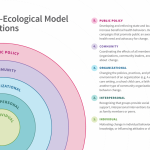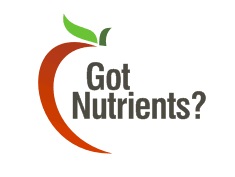Building Healthy Eating Patterns
University of Hawai‘i at Mānoa Food Science
Helping People Make Healthy Choices
It is not just ourselves, the food industry, and federal government that shape our choices of food and physical activity, but also our sex, genetics, disabilities, income, religion, culture, education, lifestyle, age, and environment. All of these factors must be addressed by organizations and individuals that seek to make changes in dietary habits. The socioeconomic model incorporates all of these factors and is used by health-promoting organizations, such as the USDA and the HHS to determine multiple avenues through which to promote healthy eating patterns, to increase levels of physical activity, and to reduce the risk of chronic disease for all Americans. Lower economic prosperity influences diet specifically by lowering food quality, decreasing food choices, and decreasing access to enough food. The USDA reports that an estimated 12.3 percent or 15.6 million Americans were food insecure, meaning they had insufficient funds to feed all family members at least some time during the year in 2016[1].

Image by Allison Calabrese / CC BY 4.0
Everyday Connections

Interested in another reliable source for nutrition and health information? The “Got Nutrients?” website highlights the importance of meeting essential nutrient needs in order to maintain optimum health. This website, geared for those interested in nutrition, fitness, and health, posts short daily nutrition and health messages. Each short “Daily Tip” includes links to both a popular article and to a related scientific resource. For more information about “Got Nutrients?” visit, http://www.gotnutrients.net. To receive the “Daily Tips” by email, visit http://www.gotnutrients.net/email_alerts/subscribe.cfm
Learning Activities
Technology Note: The second edition of the Human Nutrition Open Educational Resource (OER) textbook features interactive learning activities. These activities are available in the web-based textbook and not available in the downloadable versions (EPUB, Digital PDF, Print_PDF, or Open Document).
Learning activities may be used across various mobile devices, however, for the best user experience it is strongly recommended that users complete these activities using a desktop or laptop computer.
- Food Security in the U.S. United States Department of Agriculture, Economic Research Service. https://www.ers.usda.gov/topics/food-nutrition-assistance/food-security-in-the-us/interactive-charts-and-highlights/. Updated September 6, 2017. Accessed November 22, 2017. ↵

